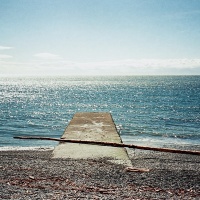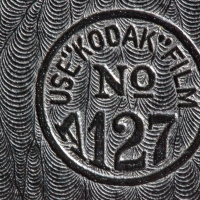Maintenance
Sail maintenance on the Passing Cloud, one of many tasks attended to by crew between the tours.
While this was finishing up, I took a walk on the nearby beaches and found a previously unrecorded archaeological site that is 10,700 years old.
Canon 5Dii, EF 100/2.8 macro lens, ISO200, f8, 1/400th













Yeah, that happens all the time – people taking walks on beaches finding things of great significance.
For example, this one time in the Cayman Islands, I saw a toothbrush in the sand.
(Also, I agree with Kate: that WAS a pretty casual comment just tossed in there, given what you found!)
LikeLike
I guess I am spoiled. It is not the only one I found on this trip. In another bay I found a site very similar to the one mentioned here, as well as an unrecorded fish weir that is probably “only” a few hundred years old. In some ways those discoveries were more satisfying as they were in an inlet that had been quite intensively surveyed for sites, and thus had been missed. They were more unexpected whereas the one I first mentioned I fully expected to find at least one site because I knew the bay had not been looked at before, and it’s geomorphology fits the pattern for where the old sites are most commonly found.
LikeLike
I actually think it’s amazing that you can do this sort of work. And also that you can use words like “geomorphology.”
LikeLiked by 1 person
Just a casual comment about an everyday occurrence? HOLY MOLY talk about an understated revelation. So excited for you, Mr E! What will this mean for your research? Or will it just be handed over to people currently excavating in the area?
LikeLike
Hi Kate. Much of the analysis about the distributions of this site type/age has been done in detail, and published. It will take a very large number of new sites to make that analysis worth a second look as we had such a large sample (>100) for the initial study. So, it mostly just goes into a database for potential future study. But also, it can now be protected if there are future plans for development in this location, which is outside of the otherwise protected areas. I don’t think this one is worthy of excavation – there were no signs that there is much that survives the rise and fall of sea level within the beach itself, just a surface scatter remaining in a “lag deposit”.
LikeLiked by 1 person
I suppose even if unexcavated, knowing it is there is important to gauge the number of people who might have lived in the area as a whole and no doubt adds to other areas of knowledge, even if left I disturbed. Fascinating career you have, Mr E!
LikeLiked by 1 person
That is true – we made some very interesting discoveries about the cultural decisions made to locate sites in the early Holocene based solely on site distributions and only excavating a half dozen or so – enough to prove the dating side of things for the others.
LikeLiked by 1 person
Wow, they can name the site sfter you! Now, how do you know how old it is?!
LikeLiked by 1 person
Hi Yvonne. Sites of this type, in this area, can be readily dated by a combination of the type of artifact found and the known sea level history. 10,700 years ago sea level was rising and at that time the dry land at the marine edge was where the beaches are now. For just a hundred or two hundred years (sea level was rising very quickly) the ocean edge was at this level, and after that it rose to 15m higher where it stayed for many thousands of years. Only in the past thousand years has the old shore line reemerged with the now falling sea levels (the land is rising due to tectonic forces). Certain kinds of stone and tools were used at the time sea level was rising past this elevation, and have not been used or made for the past few thousand years. Therefore, that kind of stone tool at these elevations must be 10,700 years old (+/-50 to 100 years). There are actually a lot of sites of this age known in Haida Gwaii – probably about 200 that are recorded.
LikeLiked by 1 person